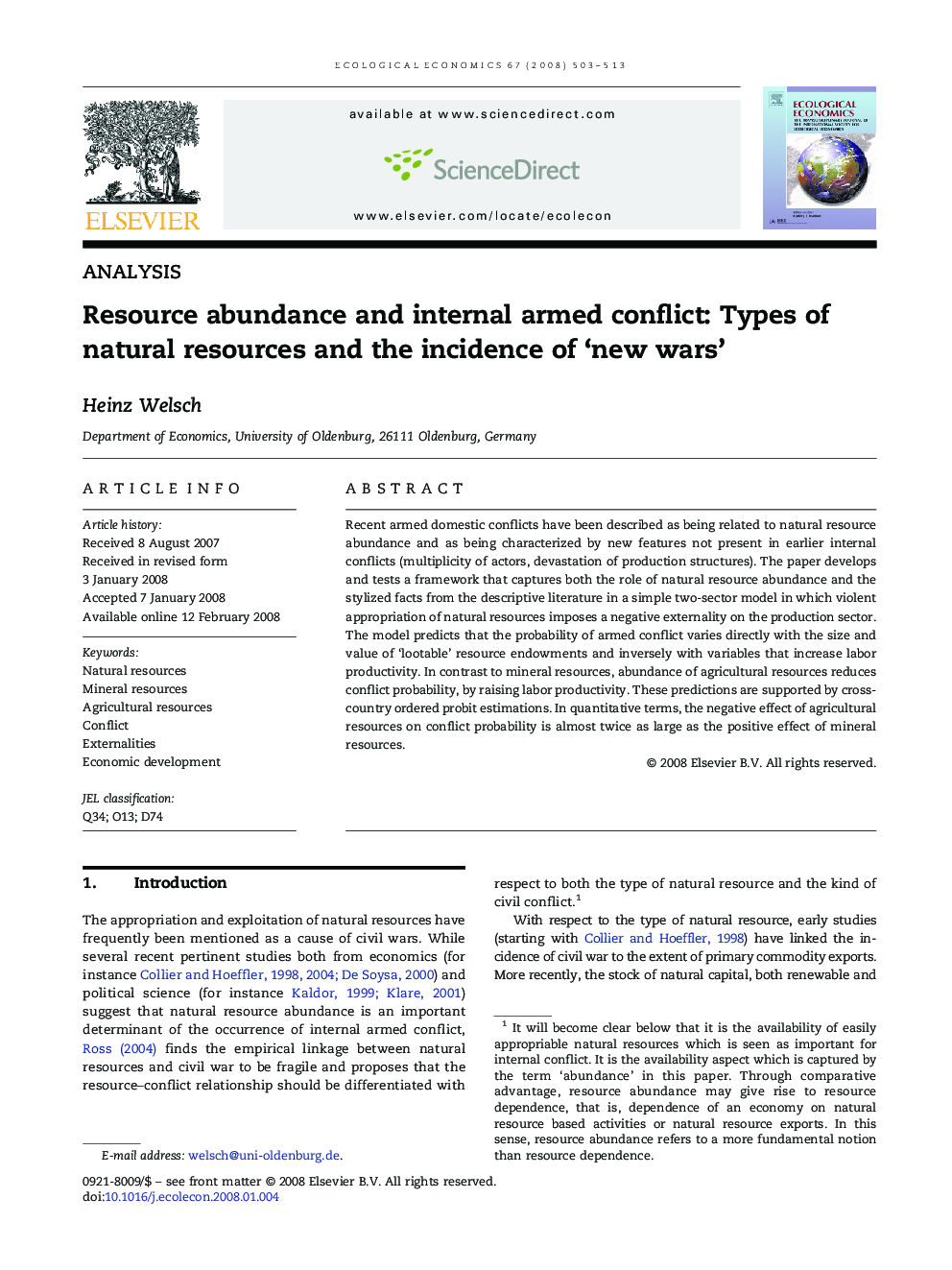| Article ID | Journal | Published Year | Pages | File Type |
|---|---|---|---|---|
| 5051189 | Ecological Economics | 2008 | 11 Pages |
Recent armed domestic conflicts have been described as being related to natural resource abundance and as being characterized by new features not present in earlier internal conflicts (multiplicity of actors, devastation of production structures). The paper develops and tests a framework that captures both the role of natural resource abundance and the stylized facts from the descriptive literature in a simple two-sector model in which violent appropriation of natural resources imposes a negative externality on the production sector. The model predicts that the probability of armed conflict varies directly with the size and value of 'lootable' resource endowments and inversely with variables that increase labor productivity. In contrast to mineral resources, abundance of agricultural resources reduces conflict probability, by raising labor productivity. These predictions are supported by cross-country ordered probit estimations. In quantitative terms, the negative effect of agricultural resources on conflict probability is almost twice as large as the positive effect of mineral resources.
